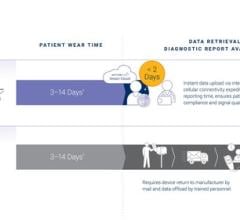
An image of an early 1980s hybrid OR installation at St. Joseph's Hospital in Atlanta, which never took off because it was an idea before its time.
Each year, I find it interesting that some “new” technology being introduced by a vendor is actually an old, recycled idea.
A Siemens information technology executive showed me a video from the late 1970s of him as a young man demonstrating a futuristic computer system. It stored radiology images and reports electronically to eliminate the need for paper medical records. It was an idea 20 years ahead of its time, when the concept of a picture archiving and communications system (PACS) was very foreign.
A reader recently commented on my online report from Heart Rhythm Society 2012. While working for Medtronic in the late 1990s, he came up with the idea of inexpensive, disposable, stick-on Holter monitors to make them easier to use. The product concept was rejected at the time. He found it interesting I called two such monitors now on the market “most innovative new technology” 10 years later.
Arnoldo Fiedotin, M.D., who retired from practice 18 years ago, wrote me after reading DAIC’s coverage of the current trend toward hybrid operating rooms (ORs). He was a pioneer in interventional techniques and served 24 years as director of cardiac services at Atlanta’s St. Joseph’s Hospital.
“Being retired, I generally do not keep up with advances. Reading your issue on hybrid ORs, however, prompted me to write you about my own experience. Back in the early 1980s at St. Joseph’s Hospital, and with the collaboration of Philips, I designed and they built a custom-made biplane cath lab that could double as an OR. The table, of my own design, was not only detachable, but could rise and lower, tilt left and right, and do Trendelenburg and reverse Trendelenburg. A significant advantage was that once the patient had been centered on the beam of both imaging systems, one could go from right to left obliques by simply pressing a different foot pedal. It could also do cranio-caudal views. Due to the expense of the system and a very limited commercial market, the design was not advertised. I built it for the future, which I saw combining cardiology and surgery, but I was ahead of the times and no surgical interventions were performed.
“One thing we did was to have the detached table taken to the helipad, so the patients could be moved from the helicopter stretcher directly onto the cath table. I hasten to add that the treatment modalities at that time did not include angioplasty. When angioplasty became available, that table was, again, a factor in getting occasional emergencies to the lab much faster.”
He included a marketing photo of the system (above). Although showing technology from 30 years ago, the photo looks amazingly similar to the marketing photos of modern hybrid OR installations that vendors send me.


 October 25, 2022
October 25, 2022 


